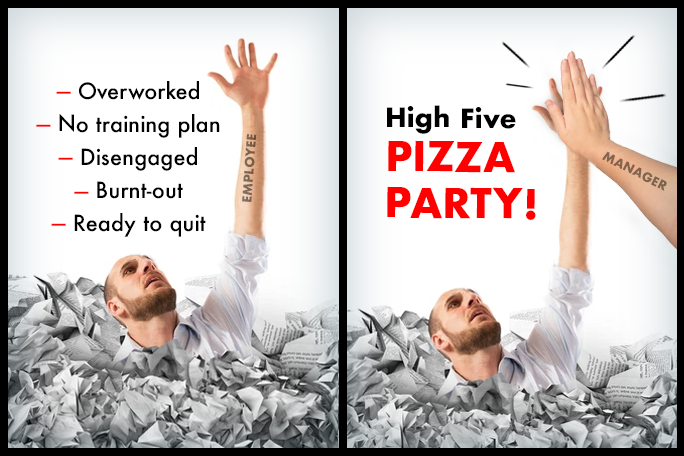Most business owners understand that engagement is important, but few understand how to achieve it. Engagement matters because it improves retention and productivity. Engaged employees also close more sales simply because customers pick up on their enthusiasm, making them want your product.
Sometimes, engagement is confused with satisfaction. A satisfied employee is happy. An engaged employee is enthusiastic and energized, likely to put in extra effort, and way more likely to stick around.
Unfortunately, many employers try to engage with shallow measures, such as the aforementioned pizza parties, teambuilding exercises, and foosball tables. These might be enjoyable, but they won't help you get engagement. Authentic engagement needs a plan.
Does Employee Engagement Matter for Business Growth?
Employment engagement does matter. It can accelerate revenue growth substantially. An engaged workforce increases profits by as much as 21%, and companies that lead in customer experience have many engaged employees.
You can outperform your competitors by 147% by adequately investing in employee engagement. This is on top of lower turnover costs and overall improved productivity.
Investing in employee engagement gives you higher retention, an improved company culture, and more productivity, as well as more significant revenue and revenue growth.
One way to do so is through workforce planning.
What is Workforce Planning?
According to the United States Office of Personnel Management, workforce planning is first identifying and then addressing the gaps between the workforce you have and the one you will need in the future.
So, how does this improve engagement? Simple. If you have a workforce plan including training, you can support employees as they grow with your organization. A good workforce plan allows for and encourages internal promotions, which gives your employees something to work and strive for. Recruiting in alignment with your goals helps too by bringing in people who are already primed to believe in what your company does.
What Does Workforce Planning Help a Business Do?
Workforce planning ultimately makes sure that you have the right people in the right place at the right time. It makes sure that you proactively deal with skills shortages, including internal training. You can train employees for functions you will need and then move them into that position as it becomes "real."
The Four Steps of Workforce Planning
Workforce planning consists of four phases:
- Set a strategic direction based on your company's goals and business plan.
- Determine what your workforce is and consider how it will evolve while also determining what you need to accomplish your goals.
- Develop an action plan to fill the gap. This includes recruiting, training, succession planning, technology, etc.
- Implement the plan.
This is an ongoing thing. Your strategic direction may change as your organization grows. You will need to analyze your workforce repeatedly as things change, especially if you have unexpected attrition or find a surprising talent in a key employee.
Top Tips to Implementing a Successful Plan
So, how can you do workforce planning right? Here are some tips:
- Listen to External Advice: Partnering with a PEO can help here. They have the long-term experience to see what has not worked for other similar companies. Consider risk management throughout the process. Risks can show up as you plan for your goals, and you need to be ready to mitigate them.
- Use Reliable Data: For example, it's important to consider the age of your employees. Older employees are, obviously, more likely to leave as they retire, and you need a plan to ensure that they pass on their institutional knowledge before they do. You should also consider your typical retention rate and how to improve it.
- Bring in People other than HR: The owner should be involved, as should any other division heads. Division heads understand their own staffing needs far better than HR can. Make sure that all stakeholders are brought in on developing the plan.
- Do Scenario Planning: While you can't predict everything that might happen, going through multiple scenarios can help. Don't forget to include politics, the labor market, even the weather. (Even if you don't think the weather impacts your specific business).
- Always Monitor Results and Keep Your Plan Flexible and Fluid: In extreme cases, you may even need to start over, but most of the time, you will find yourself making quick adjustments as needed.
Workforce Planning with PRO Resources
If you struggle with engagement and retention, workforce planning might be the answer. PRO Resources can help. We can assist in developing custom recruitment and training programs, help with performance reviews and handle compliance. Contact us today for a free consultation to see how we can help your business thrive.


